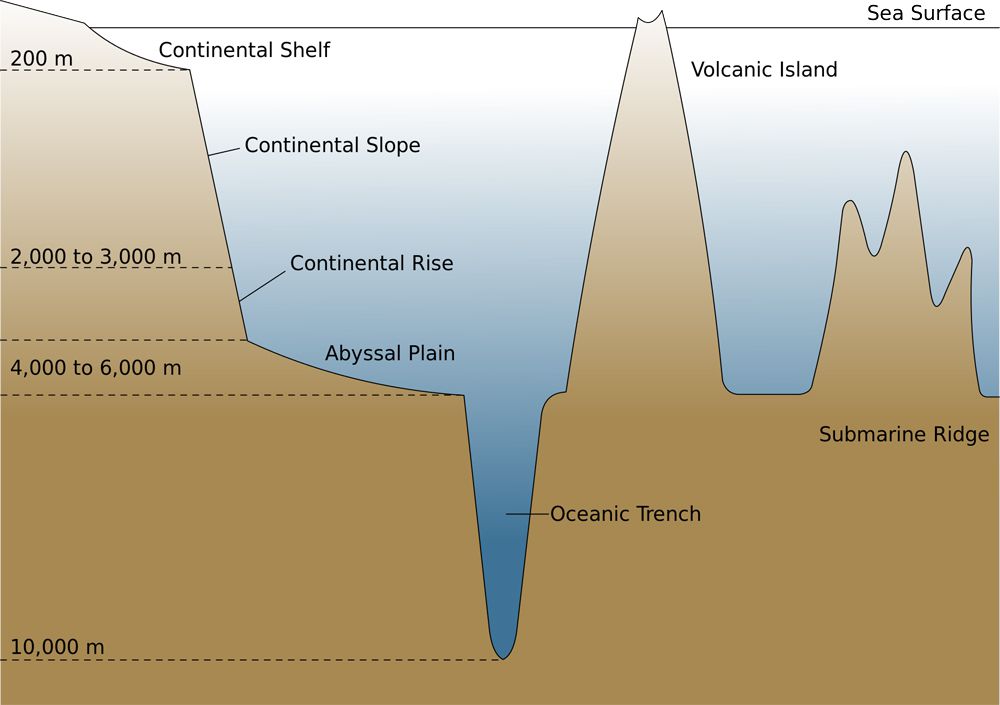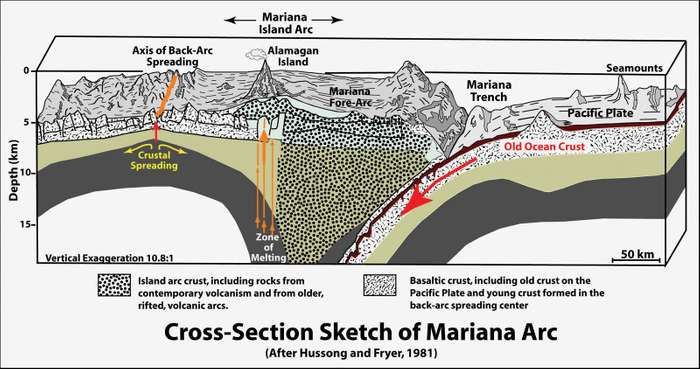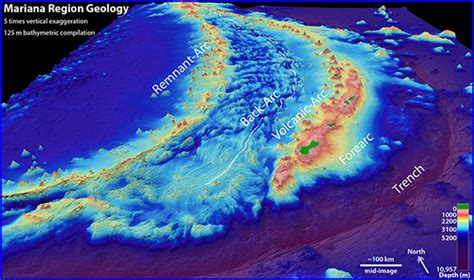Science has never been a “thing” for me; however, I was compelled to do some research. We can thank an app and a book. One evening I was playing an app. Finishing the puzzle required that I answer the question, “What is the deepest ocean trench?”. As if I even knew what such a thing was! Lo and behold, the next evening the very same name/subject occurred in something I was reading. Obviously, there was a message there. You all are about to receive said message, which is a brief thread on ocean trenches and specifically the Mariana Trench.
What is an “Ocean Trench”?
The National Geographic’s definition says,
Ocean trenches are long, narrow depressions on the seafloor. These chasms are the deepest parts of the ocean—and some of the deepest natural spots on Earth.

How is an “Ocean Trench” formed?
Subduction Zones
When the leading edge of a dense tectonic plate meets the leading edge of a less-dense plate, the denser plate bends downward. This place where the denser plate subducts is called a subduction zone.
Oceanic subduction zones almost always feature a small hill preceding the ocean trench itself. This hill, called the outer trench swell, marks the region where the subducting plate begins to buckle and fall beneath the more buoyant plate.
Some ocean trenches are formed by subduction between a plate carrying continental crust and a plate carrying oceanic crust. Continental crust is always much more buoyant than oceanic crust, and oceanic crust will always subduct.
For more information on Ocean Trenches, you can go to,
National Geographic: RESOURCE LIBRARY | ENCYCLOPEDIC ENTRY Ocean trench
It is very in-depth.
Now, moving on to what caused The Mariana Trench. There were a couple of sources of available. Having been raised with a full set of the Encyclopedia Britannica
I decided to use their information.
Mariana Trench
May 22, 2020
Mariana Trench, also called Marianas Trench, deep-sea trench in the floor of the western North Pacific Ocean, the deepest such trench known on Earth, located mostly east as well as south of the Mariana Islands. It is part of the western Pacific system of oceanic trenches coinciding with subduction zones—points where two adjacent tectonic plates collide, one being forced below the other. An arcing depression, the Mariana Trench stretches for more than 1,580 miles (2,540 km) with a mean width of 43 miles (69 km). The greatest depths are reached in Challenger Deep, a smaller steep-walled valley on the floor of the main trench southwest of Guam. The Mariana Trench, which is situated within the territories of the U.S. dependencies of the Northern Mariana Islandsand Guam, was designated a U.S. national monument in 2009.

Measuring the greatest depths in the Mariana Trench is an exceedingly difficult task, given the technical challenges of delivering instrumentation to such a remote location and then obtaining accurate readings. The first attempt was made in 1875 during the Challenger Expedition (1872–76), when a sounding of 26,850 feet (8,184 metres) was obtained near the southern end of the trench. In 1899 Nero Deep (31,693 feet [9,660 metres]) was discovered southeast of Guam. That sounding was not exceeded until a 32,197-foot (9,813-metre) hole was found in the vicinity 30 years later. In 1957, during the International Geophysical Year, the Soviet research ship Vityaz sounded a new world record depth of 36,056 feet (10,990 metres) in Challenger Deep. That value was later increased to 36,201 feet (11,034 metres). Since then several measurements of the Challenger Deep have been made, using increasingly sophisticated electronic equipment. Notable among these is the depth of 35,840 feet (10,924 metres) reported by a Japanese expedition in 1984 and one of 36,070 feet (10,994 metres) obtained by a U.S. research team in 2011. In addition, another deep hole—originally called HMRG Deep (for Hawaii Mapping Research Group, the discoverers of the location) and later renamed Sirena Deep—is situated south of Guam and east of Challenger Deep. First encountered in 1997, its depth has been reported variously as 34,911 and 35,463 feet (10,641 and 10,809 metres).
